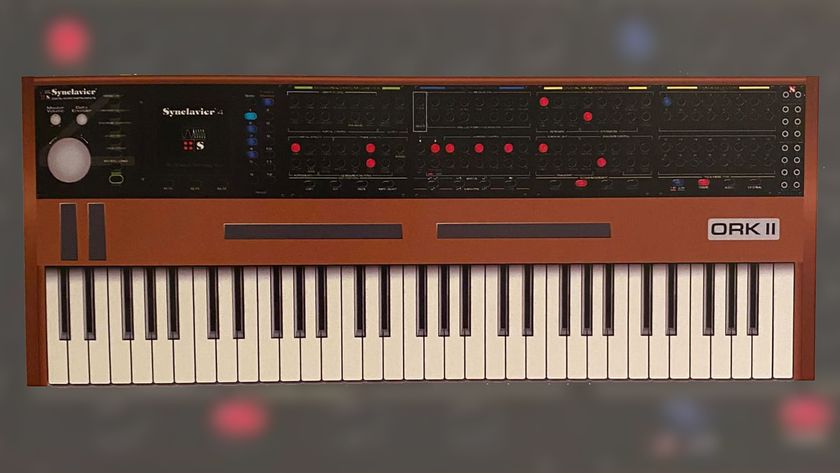After 40 years, Moog is back with a $5,000 reboot of its 16 Channel Vocoder
We might have to stick with a plugin for now
Many synths now come with vocoders built in - and, of course, there are countless plugins that’ll do the job - but if you want the ultimate in vocoder luxury, and a price tag to match, Moog has the answer.
After 40 years, the company is resuming production of the classic Moog 16 Channel Vocoder. Introduced in 1978 - and as heard on Giorgio Moroder’s E=MC2 - this enabled musicians to create not only the famous vocoded vocal effect, but also to process synths and other instruments.
The new version is cut from the same cloth; in fact, it’s based on the original schematic and features hand-soldered analogue voice circuits to ensure that the sound is as authentic as possible. There are some improvements, too, though, including updated mechanical connectors and a modern power supply.
To give you a quick refresher, a vocoder works by analysing the timbral characteristics of one sound (the program) and impressing these onto a second signal (the carrier). In the most obvious example, the program is your voice and the carrier is a keyboard.
Specific features of the Moog version include:
- 16 Bands: The Moog 16 Channel Vocoder offers 16 patchable bands ranging from 50 to 5,080 Hz for optimal encoding of the fundamental spectral characteristics of the human voice. In addition, a selectable DIRECT mode passes an additional high frequency channel (above 5,080 Hz) to the vocoder output for a greater degree of vocal intelligibility. While traditionally associated with vocal effects, the Moog 16 Channel Vocoder’s ultra fast response time makes it additionally useful for capturing the fast transients of percussive sounds.
- Sample & Hold: When you articulate a sound and press the Sample/Hold switch, the tonal characteristics of that sound will be held until the switch is returned to the out position. This function is particularly useful in creating sustained vocal phrases without pausing for breath and can be controlled via remote footswitch.
- External Patch: Use the included patch cords to interconnect this powerful vocoder with other analog gear, or create unusual “cross patches,” allowing you to select any frequency range of the program and impose those characteristics upon any frequency range of the carrier.
- Hiss, Buzz, and Balance: Selectable Hiss (sibilance), Buzz (plosive), and Balance controls allow you to fine-tune the fundamental details of your electronic voice.
- Footswitch Operation: The Sample/Hold, External Patch, and effect Status parameters may be remotely controlled for live performance via footswitch.
Check out the video above to watch Moses Sumney, accompanied by a full band, in the Moog Sound Lab in Asheville, North Carolina, performing a reimagination of Conveyor from his forthcoming album græ. You’ll see him processing his vocals through the Moog 16 Channel Vocoder while using the Moog Matriarch synth as the vocoder’s carrier signal in order to transform and resynthesize his voice.
Find out more about the Moog 16 Channel Vocoder on the Moog website. It’s available for pre-order now, though with a price tag of $5,000, you’re going to need deep pockets if you’re going to buy one.
Get the MusicRadar Newsletter
Want all the hottest music and gear news, reviews, deals, features and more, direct to your inbox? Sign up here.



I’m the Deputy Editor of MusicRadar, having worked on the site since its launch in 2007. I previously spent eight years working on our sister magazine, Computer Music. I’ve been playing the piano, gigging in bands and failing to finish tracks at home for more than 30 years, 24 of which I’ve also spent writing about music and the ever-changing technology used to make it.











